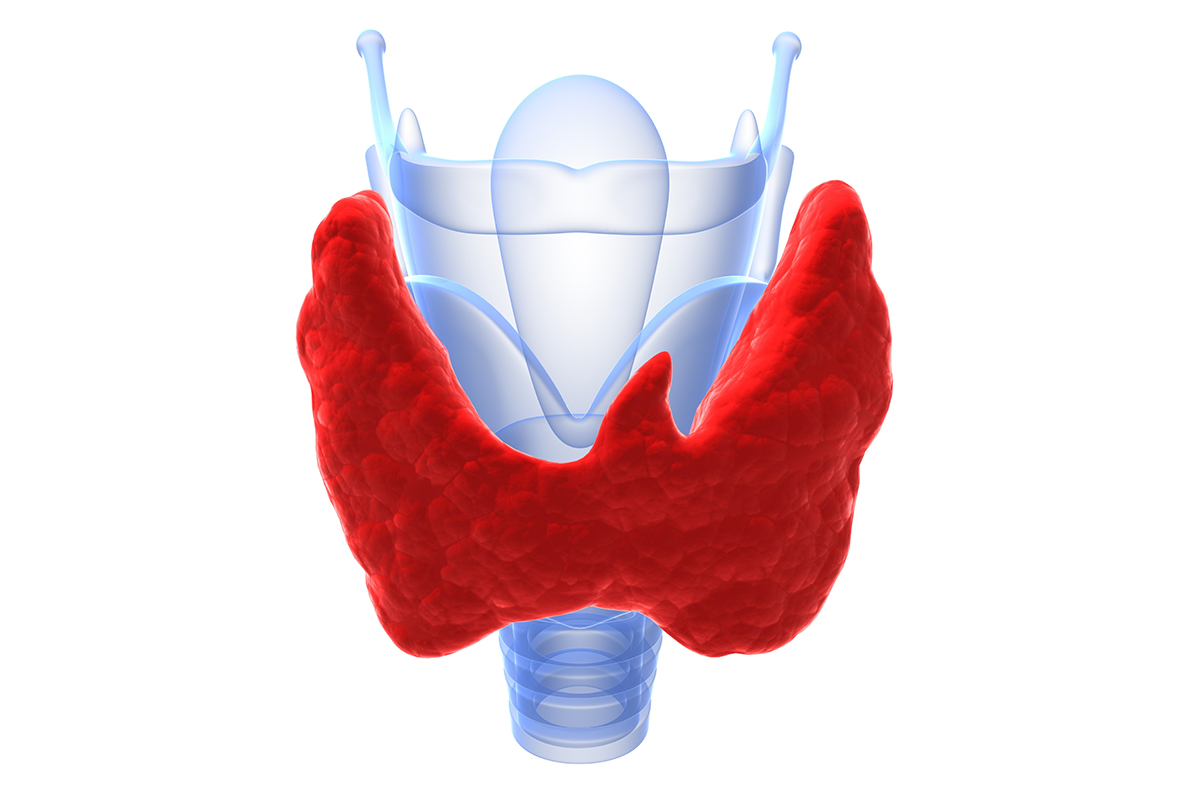
Thyroid Surgery
Thyroid
Gland
Thyroid gland is a butterfly shaped endocrine gland located in the front of the neck. It produces a hormone named thyroxine, which controls growth and metabolic functions of the body.
Surgery
of
Thyroid
Gland
Care of a patient with a thyroid problem may involve a number of specialists including an endocrine surgeon, an endocrinologist and others such as a nuclear medicine specialist. Surgery of the thyroid gland plays a key role in the following conditions.
Thyroid
Cancer
In Australia 1 in 48 female and 1 in 174 male will develop thyroid cancer by the age of 85. The rate of diagnosis of thyroid cancer has been increasing.
Thyroid cancer will come to attention either as a lump in the neck felt by the patient or their doctor or as an unexpected finding of a radiological test of the neck such as ultrasound, CT or a PET scan. A fine needle biopsy can confirm or raise the suspicion of thyroid cancer once a lump is found in thyroid or in a lymph gland of the neck.
Surgery of thyroid cancer involves removal of thyroid gland and sometimes removal of lymph nods in the neck as required. Some patients also require radioactive iodine treatment as well as long term thyroid stimulation hormone suppression by using a higher dose of thyroxine.
Thyroid
Nodules
Thyroid nodules are common. In 5% of the population they can be felt and in 50% they can be seen in ultrasound scan.
Surgery is required for the nodules that are suspicious for cancer, overactive (produces too much thyroxine) or large enough to cause pressure symptoms (difficulty in breathing, swallowing etc.)
Multi
Nodular
Goiter
(MNG)
In this condition there are multiple nodules in thyroid gland and about 5% of the population may have MNG.
Those patients with MNG with the following features will benefit from surgery; nodules suspicious for cancer, over production of thyroxine hormone, pressure symptoms (difficulty in breathing, swallowing etc.), growth into the chest or continuing growth during a period of observation.
Grave’s
Disease
This is an autoimmune disease of the thyroid, which in some patients affects the eyes as well.
Initially all the patients will need medications to control the over production of thyroxine hormone. The long-term options include continuing medical management, radioactive iodine treatment or surgery.
Surgery is particularly advantageous in younger patients, those with eye disease, those with suspicion for cancer, those with large glands with pressure symptoms (difficulty in breathing, swallowing etc.), or in whom medical management is difficult or not tolerated.
Overactive
Thyroid Gland
This may be commonly due to a single overactive/hot nodule, an overactive MNG (toxic goiter) or Graves’ disease. Surgery may be required after initial medical control of thyroxine over production.
Types of
thyroid
surgery
Total thyroidectomy
This is the removal of whole thyroid gland. It is done through an incision made in a skin crease of the neck. The length of which depends on the size of the gland and other factors. After surgery thyroxine needs to be replaced in tablet form for the rest of the life.
Hemi/Partial thyroidectomy
This is removal of half of the thyroid gland or sometimes less than half of the gland. Sometimes it can be done through a mini incision. Most people (up to 85-90%) can avoid thyroxine replacement.
Neck lymph node dissection
This is required in some thyroid cancers when there is a confirmation or suspicion of lymph gland involvement. Central lymph node dissection is when the lymph nodes around the thyroid gland are removed and lateral lymph node dissection is when lymph nodes in other areas of the neck are removed.
For more information Contact Us
